Building a Lean Accounting Team

How Organizations Can Achieve Optimal Efficiency Through Outsourcing
THANK YOU FOR YOUR INTEREST IN BUILDING A LEAN ACCOUNTING TEAM AND THE CHANGING FACE OF FINANCE AND ACCOUNTING OUTSOURCING (FAO). EVERY YEAR, IT SEEMS APPROPRIATE TO SAY THAT WE’RE LIVING IN UNPRECEDENTED TIMES, BUT THAT SENTIMENT IS ESPECIALLY PRESCIENT AT THE TIME OF THIS WHITE PAPER’S PUBLICATION.
Changes to the working landscape and the technology that underpins its infrastructure have presented opportunities for accessibility that we’ve never seen before. Why Now? Using Finance & Accounting Outsourcing To Build Lean Accounting Teams
Remote collaboration is skyrocketing, providing opportunities for growth and innovation that weren’t accessible until now.
Technology is widening the boundaries around what we’re capable of learning and doing and allowing for investments in value-added channels like Sales and Marketing that we couldn’t conceive of just a decade ago.
The talent supply that feeds growth pipelines is changing shape in front of us, sometimes in ways that aren’t comfortable. Discomfort is never inherently negative: it challenges us to grow and change.
Leadership roles are becoming more elastic and idea-driven than ever, a change that’s challenging at times and exciting at others.
At the same time, workers at every level are seeking fulfillment, flexibility and a sense of value in their professional lives.
A strong lean accounting team can drive change to your organization
As a result, where we spend our time, money and attention is more critical than ever. The need to create a foundation that makes the most of each resource’s potential is why our clients seek us out. That’s what we’ve chosen to focus on in this white paper; exploring what we can create from the elements of solutions that no longer serve the current state of global business.

OUTSOURCED ACCOUNTING FUNCTIONS: AN UPDATED PERSPECTIVE FOR YOUR LEAN ACCOUNTING TEAM
To a lot of people, outsourcing seems like a relatively new business practice and a sign of the profit-driven times. It recalls images of endless cubicles with endlessly ringing phones, or images of massive manufacturing facilities with nimble-fingered workers rapidly assembling products to keep up with consumer demand and expectations of overnight shipping.
We owe these common associations to the concurrent rise of demand for computers and internet-enabled global connectivity that went from “rapid” to “meteoric” in the 1990’s and early aughts.
Once that was bundled together with a unprecedented trade landscape, innumerable changing regulations across the world and a sudden demand for a brand-new skillset that outpaced its respective pipeline, the image many people have of outsourcing and what it looks like was memorialized by the media coverage of the day.
It’s not necessarily an inaccurate picture of outsourcing. The problem is that it’s an outdated piece of a piece of a snapshot that spans far beyond 15 years. It’s only part of the picture, and it only represents two very narrow vertical slices of what falls under the very large umbrella we call “outsourcing.”
Throughout history – whether in 1963 when IBM offered use of their new equipment called a “computer” at their headquarters or when two-thirds of Massachusetts companies went over states lines to do business cheaper in the 1800s – American’s have been implementing the foundations of what is now known as outsourcing.
In fact, whenever new infrastructure has been implemented, be it the physical turnpikes that made interstate travel possible in the 19th century or the digital bullet train that the internet has come to be, businesses have found ways to leverage it to expand, grow and innovate.
That’s outsourcing. It’s been around since before the cotton gin and isn’t going anywhere anytime soon. Unmooring it from the narrow confines of dot-com era sensibilities provides a much bigger picture – one that has seen the inclusion of business process outsourcing (BPO).
Finance and accounting outsourcing (FAO) is one such cluster of processes that has opened up areas of new growth and fostered innovation for companies hoping to zero-in on the heart and soul of what they do – their core competencies.
As outsourcing has changed in concept and scope, FAO has evolved, too, creating opportunities for organizations that may have been traditionally excluded from bringing their products and services to market without it.
Even if you think you know FAO, you may be surprised to find that some providers offer a framework for implementing it that is vastly different from what you may be picturing.
Leadership that’s increasingly required to think out of the box and the consumerization of business relationship experiences have all made FAO an exciting and customizable tool once you’ve had a glimpse into its past, present and future uses.
Let’s take a look.
WHERE WE’VE BEEN
There’s a very good reason that the factory floor is what comes immediately to mind when outsourcing is discussed. It wasn’t until recently that BPO – initially as a vehicle for Information Technology outsourcing – and subsequently, FAO – began to claim a share of the market.
The business process outsourcing market as a whole in 2000 was an estimated $45.6 Billion. In 2010, it had more than doubled to $93.1B.
By 2016, that number had skyrocketed to $154B, according to Deloitte, and the firm estimates it will exceed $212B in this year.
Finance & Accounting
If we take a closer look at the year the BPO market size doubled, 2010, we see the Philippines and India emerge as destination countries for the rapidly growing processes (as opposed to production) sector of the outsourcing machine.
Some may assume that this time period also marked a drop in U.S. jobs while outsourcing emerged as a top domestic business strategy, but the data paints a different picture entirely.
What’s interesting is that based on stats gathered by IBM for their Global Locations Trends Database – a dynamic database that keeps track of which jobs are going where and measures market spend across outsourcing verticals – the United States took the number one spot for overall jobs in 2010, the same year that BPO was booming.
One potential reason for this is that as organizations are able to entrust transactional and repetitive work to offshore locations, they are free to add high-value roles stateside that contribute to growth and focus on core competencies instead.
And while outsourcing in various countries continues to grow, adding jobs to their economies, one market has shown increasing abilities in the finance and accounting space.
2010 also saw the emergence of the Philippines as a hotspot for BPO overall but especially finance and accounting outsourcing and remains a top choice for organizations that are looking to add overseas resources to their stateside operations.
Its popularity as a destination country for FAO processes is due to a number of factors that include a top-notch secondary education graduation rate and a number of cultural parallels.
WHERE WE ARE NOW
BPO has fluctuated in market share over the years, but the past few years have seen a general trend upward, particularly in regard to FAO. In 2018, for example, the entire BPO market was worth $207.7B with FAO claiming $49.9B of the market overall.
What’s more, the types of industries making use of outsourced finance and accounting processes are more diverse than they’ve been in prior years, encompassing sectors like retail and healthcare: $64.36B foreign and domestic investment, almost 100K jobs were destined for the U.S. in 2018, down only slightly from the year before (approximately 112K roles across all industries).
WHERE WE’RE GOING
It’s clear that BPO – and by extension, FAO – has experienced a number of changes over the past two decades, and if the research from Deloitte is any indication, it’s a market that will continue to grow. This is especially true in a business landscape that continues to change shape as technology fosters global connectivity and influences consumer behavior.
One important differentiation is the changing perspective that has seen business leaders switch from a lens that views FAO as a product to be purchased through a handful of overseas providers to a service that can be customized to fit the needs of individual organizations facilitated by stateside partners.
What clients expect from their partners is rapidly changing as well.
Many aspects of B2B vendor-client relationships have undergone a rapid “consumerization”, bringing demands of personalization, social responsibility, and the integration of Business Process as a Service (BPaaS), which integrates changing technology into existing outsourced structures.
This highlights another misconception that’s long past its expiration date: that companies only choose to outsource in order to cut costs.
In fact, The Executive Knowledge Study FAO Business& Market Insights for 2017-18 surveyed leadership across 126 organizations in the U.S., U.K., and Australia to take the temperature of the FAO market and predict future outcomes. When leaders were asked to name the most important differentiators among BPO providers, none of the collected responses referenced cost reduction. Instead:
31% cited customer experience
20% cited employee experience
11% cited an ability to implement or help with the implementation of robotic process automation (RPA)
That focus on RPA is important. If you’ve been online at all in the past few years, you could be excused for thinking that the management of finance and accounting processes is headed for a completely automated future.
There is a lot of hype around RPA with third-party consultants touting its implementation as a way to “solve” transactional financial rework.
That can be said for new technology as a whole.
It seems that as soon as a new tool is rolled out – be it chatbots for customer service or AI for marketing – it’s earmarked as an absolute replacement for the channel it’s intended to supplement. Leaders are warned that if they don’t immediately find ways to expedite its integration, they’ll be left with no way to catch up to competitors that do.
Process Automation – Building a Lean Accounting Team
We’ll explore the innate fallacies of this perspective later in this white paper, but for now it’s important to note that implementing RPA, while a priority for a significant segment of financial leadership, does not point to total automation as an inevitability.
In fact, that same report showed that overhyped technological bells and whistles came in dead last on the “must-haves” list for BPO partners in that same speculative 12-month period:
3% said artificial intelligence capabilities were a significant differentiator
2% pointed to the use of chatbots as a competitive advantage
1% cited the use of prescriptive customer experience
Ultimately, what clients expect from BPO partners has widened alongside the market offerings of the industry. When it comes to FAO, that includes a pivot toward something that just hasn’t been possible for an overwhelming segment of potential BPO clients – lean accounting.
A FRAMEWORK FOR DISRUPTING THE OPERATIONAL STANDARD
Lean operations aren’t a new concept by any stretch of the imagination. First outlined in “the Toyota way” in 2001, it seeks to reduce waste and improve quality by solving root problems.
Leaders are always looking for ways to prevent eroding margins, find new efficiencies, do more value-added work with less, and build a lean accounting team. This can look like a lot of things depending on the strategies deployed, but it always strives to provide the best possible outcome while using the least amount of resources and requiring as few steps from Point A to Point B as possible.
Unfortunately, when taken at face value this goal is too often achieved by overtaxing the talent, resources and processes already in place, which almost always ends up having the opposite effect.
When resources are slashed or talent is overburdened, it won’t take long until quality suffers. Employees doing twice their usual workload will either have no choice but to cut corners or burn themselves out trying to do it all.
That’s a model that’s neither sustainable nor lean – especially when it results in attrition rates that demand wave after wave of hiring efforts. Neither of these outcomes will result in a better end product or even a more efficient pipeline. Maybe production, quality and morale won’t suffer immediately, but it will eventually – and it will continue to until true lean operations are achieved.
Any organization hoping to adopt a lean philosophy can only succeed if it adheres to the two key pillars of going “lean”: continuous improvement and a respect for people.
A lean accounting team will require adopting a process flow that:
Adopts a long-term strategy in lieu of short-term financial gains
Solves efficiency problems by rectifying the processes that create them
Fosters professional development by investing in the people it employs and serves
Pursues organizational improvement through organizational learning
Today’s FAO model is capable of positioning organizations to achieve each of these goals, especially in its newest iteration.

“HYBRID” HIRING & REMOTE-READY TEAMS – RETHINKING TALENT ACQUISITION IN YOUR LEAN ACCOUNTING TEAM
We’ve already established that for organizations that only need to add just one or two additional team members to keep the finance department running smoothly, traditional hiring methods become less viable by the year.
Companies have explored a number of options to fill the gap that talent shortages have left, but each of these leaves something to be desired in a unique way.
As organizations look to create a smaller lean accounting team without sacrificing the continuity that a full-time in-house teammate can provide, they inevitably grapple with models that solve some problems while simultaneously creating others – often accompanied by a price tag for results they never really see.
By the numbers, hiring and retention challenges remain front-of-mind for financial leadership, no matter what approach they attempt to rectify the issue:
Of the 11 pain points executive financial leaders scored in response to Knowledge Executive’s 2017-18 survey, over half had to do with attracting, recruiting and retaining talent
71 percent of those responses cited recruiting as a pressing concern
67.4 percent cited employee turnover
How Cyclical Hiring Became the Norm & Why It’s Not Ideal to Build a Lean Accounting Team
In organizations that have a human resource or recruiting department, creating a lean accounting team seems like it should be a straightforward, business-as-usual process, but is it really, though? The “revolving door” model will look very familiar to financial leaders that struggle to find and retain in-house accounting talent.
It’s true that employee turnover is higher overall, though the difference is not as pronounced as the 2-year median rate that’s touted as a sign of Millennial disloyalty would have us believe. Overall, it’s dipped from a 5-year median to a 4.6-year median since 2012, but that doesn’t tell the whole story.
Once you begin to control for age and profession, outliers begin to appear. Employees in the 20-26 year age range – the typical age for an entry-level position – have higher turnover rates, staying at the same job for an average of 3.6 years.
Then there’s sector specificity to consider. The overall turnover rate isn’t bad at all: voluntary separations have remained steady at just 2.3 percent. 13 If you zoom in on finance and accounting roles, however, that number jumps to 10.3 percent, five times the national average.
This means that leadership hoping to use traditional talent sourcing models step up to the plate with three strikes already against them: a dwindling supply of candidates to choose from; an age cohort that moves on twice as fast as it did less than a decade ago; for a role that sees five times as much turnover as other professions.
Taken altogether, these hurdles to hiring don’t just represent a ton of opportunity cost.
There’s a real dollar amount associated with a cyclical hiring model. The Average Employee Salary (AES) is just one part of the equation.
Every employee comes with an average 13 percent Estimated Benefits Cost (EBC) in the form of benefits like health and 401(k) matching. Research suggests that turnover is especially costly, amounting to 50 percent of the separated hire’s salary (SHS).
So, to determine how much it costs to hire employees this way, we have to consider the following: That can vary widely depending on your region, too. It’s easy to see how expensive this model becomes over the long-term based on dollar amounts alone.
Even if you only have to replace your new hire once every two or three years, you’ll quickly end up with hiring costs that simply don’t reflect the skillset you’re looking for, to say nothing of the opportunity cost and time expenditure involved in onboarding and training.
This explains why many finance leaders look for alternative hiring options, turning to staffing firms to build a lean accounting team when the need for talent outpaces the supply.
The Staffing Firm Option: When the Alternative Becomes an Obstacle to Building a Lean Accounting Team
Staffing firms and temp agencies are understandably attractive to busy leaders that need one or two accounting team members but simply do not have the time or resources that sifting through resumes and onboarding a new hire or two requires.
After all, the point of bringing accounting talent in-house is so that transactional bookkeeping can give way to strategic accounting. You want to go leaner, so why not delegate the process of finding, training and even paying skilled talent to an entity that exists for that purpose alone?
For one thing, simply letting someone else handle the hiring and payroll for a contracted employee doesn’t resolve turnover costs, and sometimes even introduces an additional cost for disengagement.
Anyone who has ever been on the other side of contract work will tell you that separating firm placements from the “real” employees is a surefire morale killer. Contracted workers are paid by and have their benefits handled by the company you hired to place them, not for you, and they know it.
It’s hard to stay engaged when you know the coworkers you sit beside each day are eligible for perks that you aren’t entitled to enjoy, whether that’s a generous 401(k) match or a monthly team-building activity that they can’t attend for liability reasons. Over time, this disengagement will cost companies about 34 percent of the disengaged worker’s salary in lost productivity.
Consider the average fee structure associated with placements that have been contracted through a staffing firm. Besides the employee’s hourly pay – based on the annual salary – there’s the markup you pay for the firm’s expertise, a multiplier of your contracted worker’s base pay that also includes the 46 percent the firm will spend on costs like insurance benefits.
This multiplier will vary by region and firm. Factor in if your contracted worker stays on for an entire year, this alternative ends up costing $82,388.80 annually. If your contracted worker stays on for an entire year, this alternative ends up costing $119,724.80 annually.
It isn’t difficult to see why, on cost alone, using a staffing firm to keep your finance department running smoothly isn’t a sustainably lean model, even before considering the additional cost of turnover for the role you’re hoping to fill.
Such alternatives may work if triage is in order and until a better, permanent solution is found, but CFOs and other finance leaders looking to make a long-term shift to lean accounting will need to look elsewhere for a solution to build a lean accounting team.

PARTNERING WITH AN OUTSOURCING PROVIDER: WHERE LEAN ACCOUNTING TEAMS THRIVE
So what options are left to organizations that have tried everything from algorithmic to alternative staffing solutions but still struggle to close their books accurately and quickly each month?
This is where the updated model of FAO provides a truly lean accounting team solution. BPO partners with a roster of legacy partnerships have lived through the seismic shift that has made the model accessible to a more diverse set of industries and organization sizes – and have emerged with a sustainable white-glove approach as a result.
They operate as a hybrid of in-house hiring models and staffing firms without the inherent drawbacks that have begun to plague both in the past decade. Overseas locations like the Philippines offer a highly educated, culturally compatible talent pool that’s well stocked and prepared to follow the Generally Accepted Accounting Processes (GAAP) that stateside companies expect.
Because supply keeps up with – and may even outpace – demand in this regard, this talent is available at a much more realistic price point, even before exchange rates are considered.
Like in-house human resource departments, they have the time, effort and resources to recruit this talent. There are already onboarding and training protocols in place for entry-level talent, and any BPO worth their salt will have heeded the call to implement employee engagement initiatives that make long-term career development possible.
Like staffing firms, BPO providers shoulder the costs associated with providing quality-of-life benefits to the talent they’ve worked hard to recruit and can offer a single per-month rate per FTE.
What’s more, because the location is remote, companies can interact with their lean accounting team as though they were virtual additions to their own teams without fostering the resentment that can sometimes flourish in stateside in-house configurations that depend on a contracted workforce.
A responsible FAO provider invests in employee engagement at the offshore sites where their teamwork, providing comparable perks that stand on their own, understanding that corporate culture and employee engagement is table-stakes in today’s business landscape.
Already, companies in 2020 started adjusting to a remote office configuration whether members of their team are across state lines or within city limits. Finance departments are therefore more equipped than they may once have been to transition to a communications model that allows for overseas workers, making now the perfect time to bring offshore accounting talent into the fold.
A single, degree-holding entry-level Accounts Payable Clerk in Manila can represent an expenditure somewhere between $2,000 to $2,500 a month – including employee benefit and vendor overhead.
With the understanding that the exact figure can vary depending on a number of factors that include vendor overhead or FTE experience, let’s revisit the annual cost of a single Accounts Payable Specialist, that represents the median of those potential costs.
BUILDING A LEAN ACCOUNTING TEAM CONCLUSION
The challenges organizations face when managing a finance and accounting department that contributes to dynamic growth and not a static commitment to the status quo, have changed a great deal in the past decade.
So have the available options for overcoming those very challenges: Accounting talent has not and will not disappear, it’s simply relocating – thriving in regions that are culturally and practically accessible and growing in communities that are more familiar than expected.
In a market where every idea can be turned into a new way to meet untapped consumer needs, growth is everything. Every last bit of an organization’s three key resources – money, time and energy – must be utilized strategically and made the most of.
Technology will continue to be an important tool and putting the adoption of its newest iterations onto the backburner will only require you to put out an eventual fire. At the same time, its limitations must be understood, and leaders have to be discerning and pragmatic when considering which ones they’ll deploy.
Traditional hiring models may not serve finance department staffing needs as well as they once used to. Leaders must allow human resource departments to focus instead on talent procurement that serves core competencies, and reserve staffing spend for better- suited initiatives.
FAO is no longer the inaccessible hallmark of multinational enterprise organizations.
BPOs with legacy partnerships and proven employee engagement models are your best bet for creating a lean accounting strategy and launching it as unobtrusively as possible.
You can choose a structure that best suits your needs – including virtual lean accounting team sizes of just one – and position it for elasticity or scalability as those needs change.
ABOUT PERSONIV
For nearly four decades, we’ve delivered custom, cost-effective solutions that improve the efficiency of teams of all sizes across the globe. Our highly-skilled people power everything from accounts payable and general accounting to payroll and tax reporting – and beyond. This rich, 35+ year history is the foundation we’ve built our expertise on.
Our white-glove service and commitment to delivering world-class customer experience has allowed us to go from vendor to partner with the clients we have the privilege of serving.
We know that one is a powerful number. A single idea can launch a business. The right leader can help it grow. And just one skilled accountant is all it takes to unlock efficiency in transactional processes so strategy can take center stage. When it does, you can focus on actionable data and stop the monthly fire drill to close the books.
By choosing Personiv to customize a lean accounting team for your organizations, you’ll be empowered to:
Focus on core competencies driven by actionable data
Review vendor metrics and complete a pilot program to assess fit
Expect a seamless transition that centers client goals and safeguards data
Universalize messy and inefficient processes during the knowledge transfer stage
Opt for round-the-clock processing by leveraging time zone differentials
Forego traditional minimum hire requirements with teams as small as one
Retain your technology – as a tech-agnostic organization, we meet you where you are
Consolidate fractional resources and shift to 1:1 resource allocation
Save up to 75 percent of your current operational cost
Change the scope of a project without starting from scratch
Customize your own lean accounting team to suit your needs. We’ve helped companies with these processes – and many more:
General Accounting / Bookkeeping
Setting Up Chart of Accounts | Month-end or year-end closing | Bank reconciliation reporting | Detail general ledger reporting | Fixed asset account management
Accounts Payable Services
Invoice approval | Expense allocation | Online payment approval | Check processing | Handling of vendor inquiries
Accounts Receivable Services
Order management | Customer billing | Customer aging | Collections management | Cash forecasting & reporting
Get the full white paper.
WITH PERSONIV PERFORMING YOUR BUSINESS PROCESSES
YOU CAN ENJOY IMMEDIATE RESULTS PREPARED ON-DEMAND AT A PRICE POINT THAT TRADITIONAL OUTSOURCING CANNOT MATCH.




